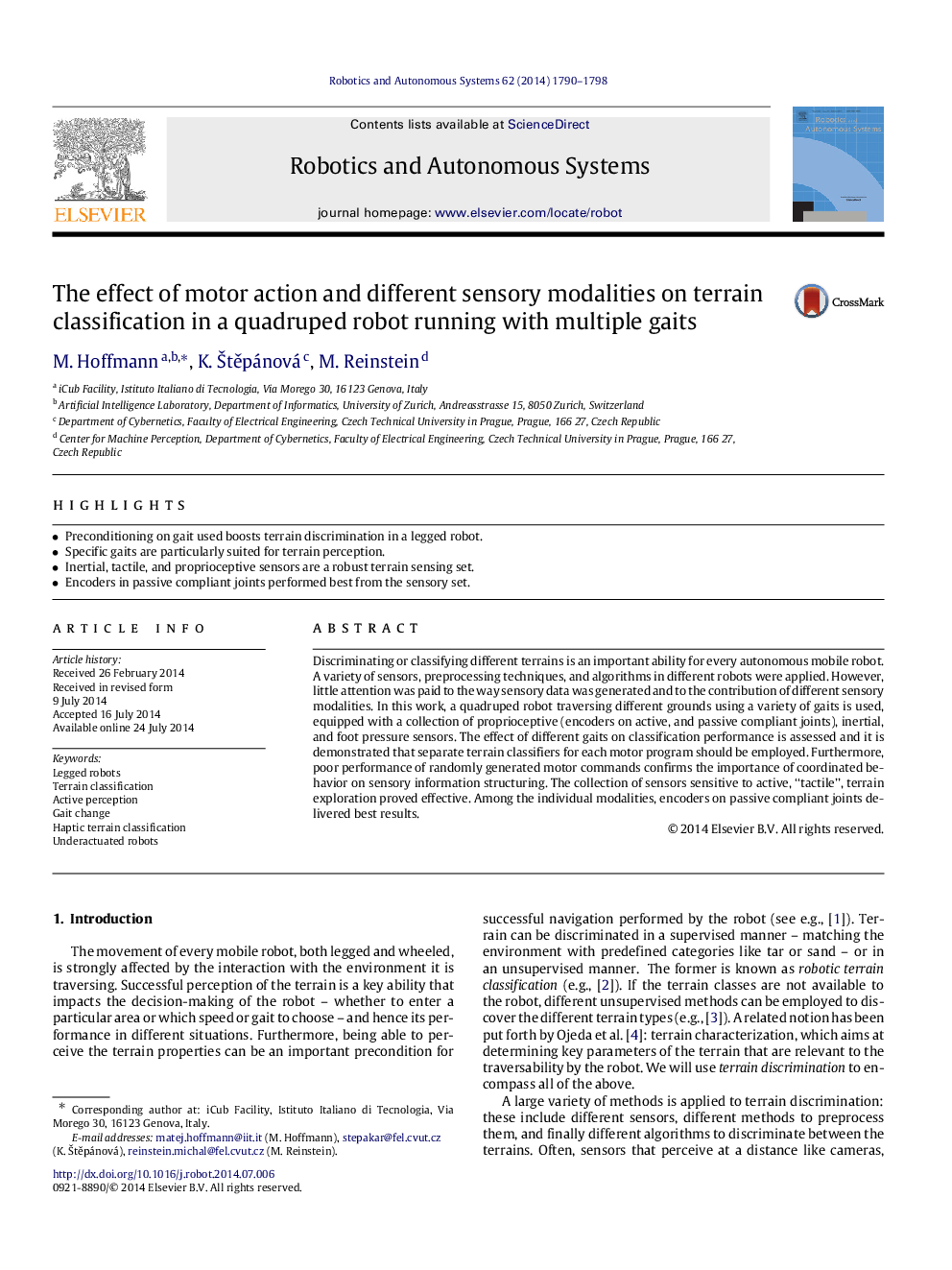| Article ID | Journal | Published Year | Pages | File Type |
|---|---|---|---|---|
| 413384 | Robotics and Autonomous Systems | 2014 | 9 Pages |
•Preconditioning on gait used boosts terrain discrimination in a legged robot.•Specific gaits are particularly suited for terrain perception.•Inertial, tactile, and proprioceptive sensors are a robust terrain sensing set.•Encoders in passive compliant joints performed best from the sensory set.
Discriminating or classifying different terrains is an important ability for every autonomous mobile robot. A variety of sensors, preprocessing techniques, and algorithms in different robots were applied. However, little attention was paid to the way sensory data was generated and to the contribution of different sensory modalities. In this work, a quadruped robot traversing different grounds using a variety of gaits is used, equipped with a collection of proprioceptive (encoders on active, and passive compliant joints), inertial, and foot pressure sensors. The effect of different gaits on classification performance is assessed and it is demonstrated that separate terrain classifiers for each motor program should be employed. Furthermore, poor performance of randomly generated motor commands confirms the importance of coordinated behavior on sensory information structuring. The collection of sensors sensitive to active, “tactile”, terrain exploration proved effective. Among the individual modalities, encoders on passive compliant joints delivered best results.
